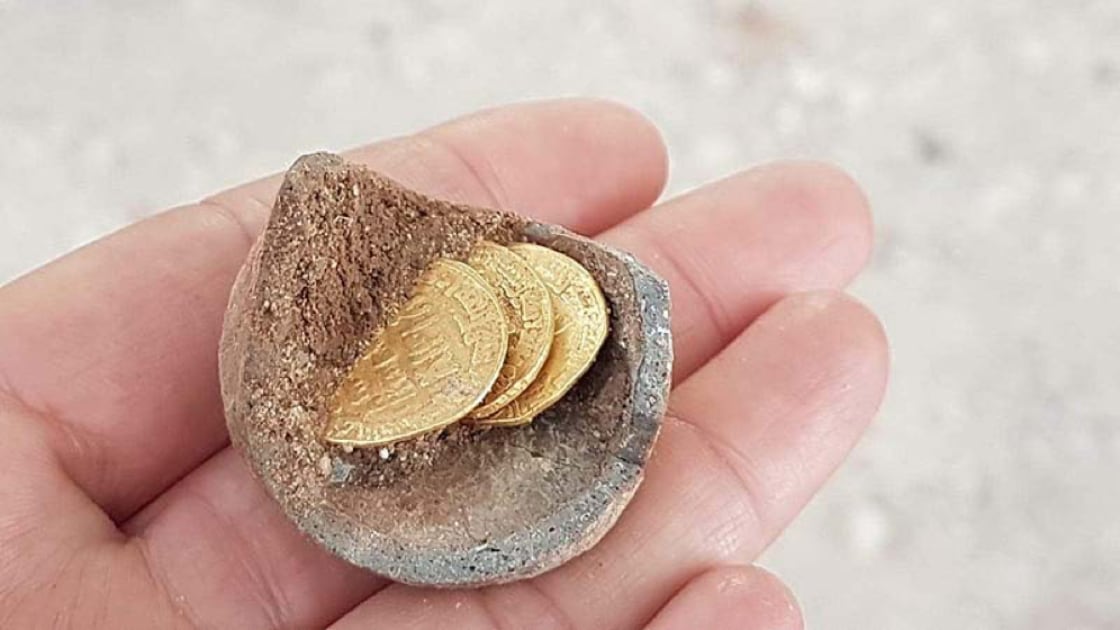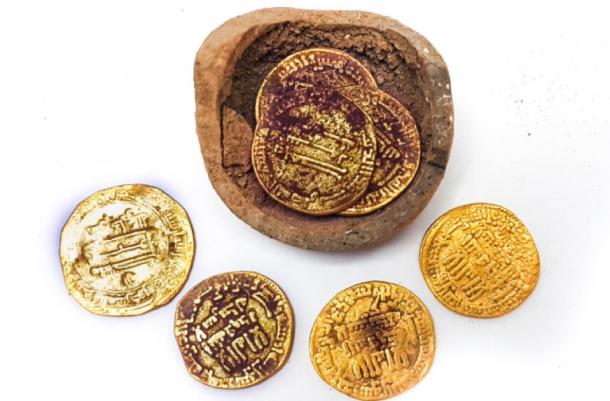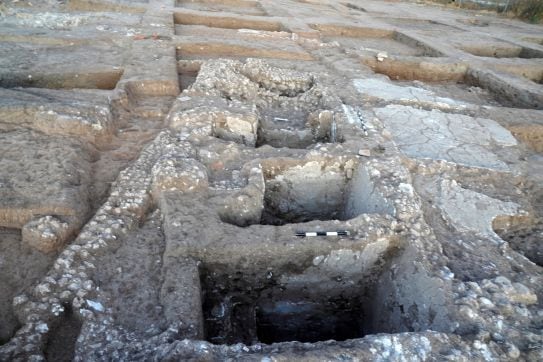"Identifikovat mince nebylo vůbec snadné ... jsou specifické tím, že mají na sobě vyražené datum i název mincovny,“
Gold coins from a clay jug
Categories: Minting - Numismatics , Finds and rescue research abroad , Nálezy nejenom s detektorem na blízkém východě

During excavations in the Israeli city of Javen, archaeologists discovered gold coins dating back to the early Islamic period. They are therefore about 1200 years old. They were hidden in a broken clay jar.
The archaeologists found the coins while exploring an old industrial zone in Javen that had been in use for centuries. There are seven pieces in total, one of which was minted during the reign of Harun ar-Rashid (786 to 809 CE.) Its immense wealth and number of wives made it a legend in the Tales of the Thousand and One Nights. Archaeologists have specifically discovered a dinar that was minted during the time of this leader.
Identifying the coins was not easy, according to numismatist Robert Kool. "It's a really great find, and it was made on the fourth day of Hanukkah. That's the Festival of Lights, which is a seven-day Jewish holiday. Going back to the coins themselves, the Islamic ones are specific in that they have the date and the name of the mint stamped on them," Kool noted.
Archaeologists believe that the coins were likely hidden in a jar by a local potter. In fact, at the same site they found the remains of pottery kilns that were in use by the end of the Byzantine period and the beginning of the early Islamic period. This means from the seventh to the ninth century. And the pot with the coins was near one of the kilns. Moreover, all the coins were in circulation at the same time, meaning that one person could have accumulated them.
In Western Europe, gold was not used to make coins between the 8th and 13th centuries. However, it was used in the east in the Byzantine Empire and in Islamic territory in general, because international trade was flourishing at that time. "And gold coins were its hallmark. But gold also played an important role in the domestic economy, because people paid taxes in gold as well," Kool said.
Apart from the aforementioned coin, the depot also includes gold dinars minted by the Aghlabid dynasty, which ruled in the north African region of what is now Tunisia from 800 AD and minted coins bearing the names of its rulers. "These are coins that are very rarely found. That's why they are very rare. Even more so than the dinar from the reign of Haroun ar-Rashid," says Kool.
The history of the city of Jeven, where the archaeologists found the coins, dates back to the Bronze Age. It has been occupied several times and has seen many falls and changes of regimes. In addition to the coins, archaeologists have discovered a large wine-making facility dating back to the Persian period in the area.


Source: www.ancient-origins.net, www.haaretz.com
The article is included in categories:



